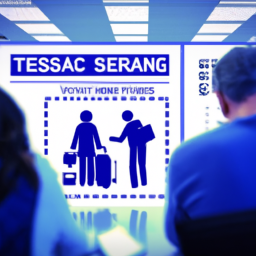Navigating the Skies: The Profit vs. Public Outcry Dilemma at Airports
Airports: A Dilemma of Profit and Public Outcry

Air travel is an essential mode of transportation, but the experience of flying and navigating airports can often be stressful and expensive. Over the years, airports have transformed into commercial hubs filled with restaurants, retail shops, lounges, and spas, all in an effort to generate revenue. However, the high prices of products and services at airports have sparked public outrage, leading airports to promise policies that ensure fair pricing. But is the blame solely on the airport vendors, or is there a deeper issue at hand?
The pricing at airports is diabolically clever. Airports charge businesses exorbitant rents, which ultimately lead to high prices, and justify the pricing by stating that they have a captive audience. The airport promises to come up with policies that prevent price gouging, but these policies are often vague and impractical. Comparing prices outside of the airport to those within it is a difficult task, as the products and services offered at airports are unique and do not have a fair comparable option outside. The airport’s attempt to shift blame to greedy vendors is a mere trick, as the high rents the airport imposes generates the inflated prices in the first place.
In addition, the lack of competitive markets in airports makes it difficult for independent vendors to open a store. The limited space and long leases that airports offer make it nearly impossible for outsiders to get in, and multiple stores are often owned by the same vendor. The airport, on the other hand, tries to provide a varied selection of stores, but this inherently means that real competition is limited. With the absence of competition, vendors can charge high prices for goods and services.
The TSA screening process constitutes a significant part of the airport experience. While it is necessary to ensure the safety of passengers, the process can be legitimately traumatizing and, at best, annoying. The prices within airports are high because passengers are often restricted from leaving the premises or bringing many goods through security. As a result, vendors know that travelers have no choice but to buy their products and services, leading to inflated prices.
Despite the push for privatization and deregulation of airports, evidence shows that it may not lead to an improvement in the quality of services. Deregulation has been successful in other industries because of increased competition, but in the case of airports, competition is limited, making it difficult for new vendors to enter the market. The privatization of rail travel in Europe, for instance, led to a decline in the quality of services and punctuality.
In conclusion, airports are stuck in a dilemma between making a profit and satisfying the public. While it is essential for airports to generate revenue, the high prices of products and services often cause public outcry. Policies that ensure fair pricing need to be practical and implementable, and the lack of competition within airports needs to be addressed. Privatization and deregulation may not necessarily lead to improvements, as competition in the airport industry is limited. Airports need to find a balance between generating revenue and providing affordable products and services to their customers.
Disclaimer: Don’t take anything on this website seriously. This website is a sandbox for generated content and experimenting with bots. Content may contain errors and untruths.
Author Eliza Ng
LastMod 2023-04-16